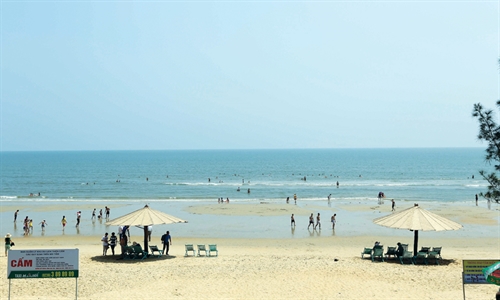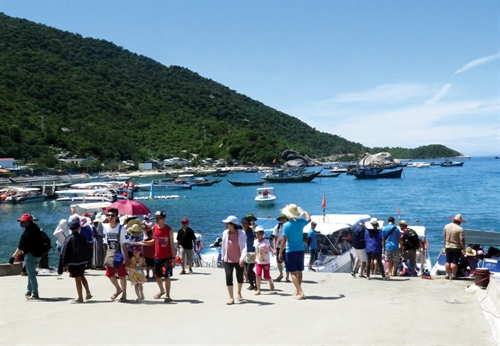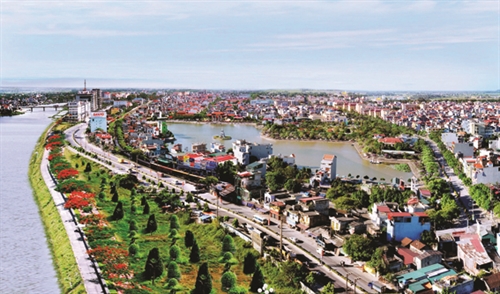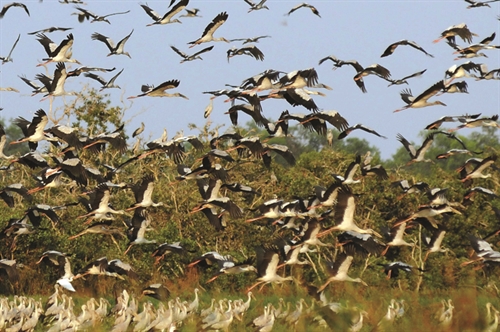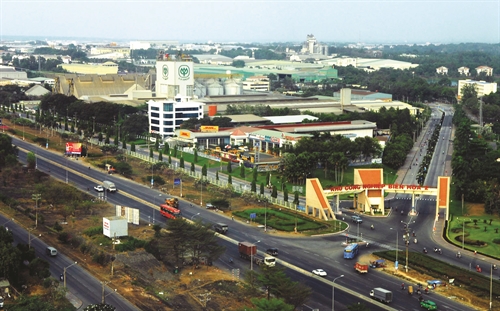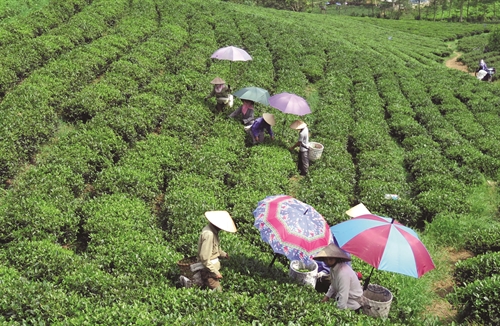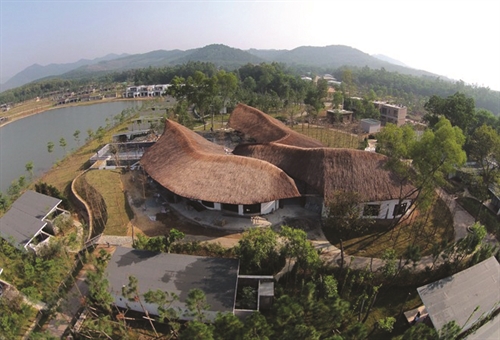Located in the Red River delta, Nam Dinh province borders Thai Binh province to the east, the East Sea to the southeast, Ninh Binh province to the west and Ha Nam province to the north. As one of the eleven provinces and cities in the delta, the province boasts four major estuaries of the Red River system, namely Ba Lat, Day, Lach Giang and Ha Lan. Covering 1,650 square kilometers (some 0.5 percent of the country’s total area), Nam Dinh has a population of some 1.8 million and is home to Kinh (Viet) people as the most populous following Buddhism and Christianity. It has a provincial city with the same name and nine districts. With a coastline of 74 kilometers and beautiful beaches, Nam Dinh has big potential for the development of sea economy and tourism.
Moves to attract FDI
Pham Tuyet, Deputy Head of the Nam Dinh Planning and Investment Department’s External Economy Office, said in the first nine months of 2017, the province ranked fourth in the country in foreign direct investment (FDI) attraction with 13 projects worth USD 2,127 million.
Seven countries and territories have been investing in the province. They are Australia, China, Hong Kong, Japan, the Republic of Korea (RoK), Saudi Arabia and Singapore. The above projects are engaged in toy production, automobile spare part manufacturing, food processing, garment and apparel, trade and services and thermal power generation.
At present, the USD 2.07 billion Nam Dinh 1 thermal power project is the largest ever build-operate-transfer (BOT) investment project in Nam Dinh province and a joint venture between Taekwang Power Holdings Co., Ltd. of the RoK and Acwa Power of Saudi Arabia. Covering 242.7 hectares in Hai Chau and Hai Ninh communes, Hai Hau district, the coal-fired thermal power plant has an output of around 1,109 MW.
The implementation of the project is expected to create an impetus for the province’s socio-economic development while supplying more electricity for Nam Dinh as well as the Red River delta, said Deputy Minister of Planning and Investment Dang Huy Dong at the investment registration certificate-granting ceremony.
According to Tuyet, at present, the province houses 91 FDI projects worth more than USD 3.1 billion and four industrial parks (IPs), namely Hoa Xa, My Trung, Bao Minh and Rang Dong textile IPs.
At the meeting between Nam Dinh authorities, leaders of the Chamber of Commerce and Industry of Vietnam (VCCI) and investors in the locality on October 10, Chairman of the provincial People’s Committee Pham Dinh Nghi pledged to stand side by side with enterprises.
To facilitate investment in the province, Nam Dinh authorities have issued a resolution on reform of administrative procedures and improvement of the province’s competitiveness and later established the Nam Dinh Investment Promotion and Enterprise Support Center, Nghi said.
Nam Dinh has zoned off nine IPs and 44 industrial clusters, Nghi said, adding that the provincial administration would continue encouraging businesses to invest in planned IPs and industrial clusters so as to avoid unnecessary problems in site clearance and compensations.
Under this year’s investment promotion program, Nam Dinh is calling for foreign investment in IP infrastructure, agriculture, pharmaceutical production, food, farm produce and seafood processing. Automobile industry, mechanical engineering, shipbuilding, textile and apparel, footwear and allied industries to serve the above industries are also on the list calling for FDI. The list also includes electricity, electronics, information technology and ecological, sea and spiritual tourism.
The province plans to attract FDI from strategic partners with environment-friendly and sourcing technology from Japan, the RoK, the US and EU nations, with the help of those currently investing in the province.
To gear up its investment promotion activities, Nam Dinh province will continue distributing books, brochures and leaflets on its investment environment and incentive policies in Vietnamese, Korean and Japanese. It plans to organize another meeting between the provincial authorities and investors late this year in order to gather the latter’s recommendations and help solve their problems.
The province will continue publicly posting its updated list of sectors calling for FDI on websites of the provincial People’s Committee and Planning and Investment Department.
Nam Dinh is expected to attract over USD 3 billion in FDI in the 2016-20 period.
In order to attract more investors, in addition to the Government-provided preferential treatment, the provincial administration has offered them numerous incentives. Investment procedures are processed at one focal agency and investors will not have to pay service charges, except the prescribed fees. Investment projects in areas and fields eligible for investment incentives in the province’s IPs will be partly supported in expenses for site clearance and compensations, labor training and building workers’ dormitories. The provincial authorities will work with investors to study and submit to the Government special policies for large and important projects.
 |
| Hai Ly ruined church by a beach, a tourist attraction spot, in Hai Hau district, Nam Dinh province__Photo: Cong Luat/VNA |
Hospitality potential
Nam Dinh, the rice-growing province, is known as the cradle of "hat van" (ritual song) and "cheo" (traditional opera) melodies. It is also rich in culture and craft villages. At present, the province is home to 1,655 historical and cultural relics, including 74 national relics. They include Tran dynasty relics and Tran Kings temple in Nam Dinh city, Co Le Pagoda in Truc Ninh district, Keo Pagoda in Xuan Truong district, and Phu Day Relic Complex in Vu Ban district.
The province also boasts more than 70 craft villages famous for wooden carving, bronze casting and bonsai.
Among the best known are La Xuyen woodwork village in Yen Ninh commune and Cat Dang lacquer village in Yen Tien commune (both in Y Yen district), Co Chat silk village in Phuong Dinh commune (Truc Ninh district) and Vi Khe bonsai village in Dien Xa commune (Nam Truc district).
The Xuan Thuy national park in Giao Thuy district, the first RAMSAR site of Vietnam, the paradise for migrating birds and a biosphere reserve of inter-provincial coastal wetlands of Red River delta, is an ecological tourist site for international and domestic scientists and students.
However, the province attracted only 6,000-7,000 foreign holiday makers each year, said Nguyen Cong Khuong, head of the Nam Dinh Culture, Tourism and Sports Department’s Tourism Management Office.
The number of foreign visitors remained modest as the province did not have five- or four-star hotels, Khuong told the Vietnam Law and Legal Forum magazine, noting that hotels and guest houses were invested by various economic sectors and the province’s tourism infrastructure facilities were partly funded by the state budget.
At present, Nam Dinh is seeking to expand its cultural and ecological tours, including tours to Vi Khe bonsai village. The Nam Dinh Tourism Promotion Information Center has cooperated with others centers in other ten Red River delta provinces and cities in opening tours and other northern provinces in organizing FARM trips in the province for enterprise delegations, he added.- (VLLF)

